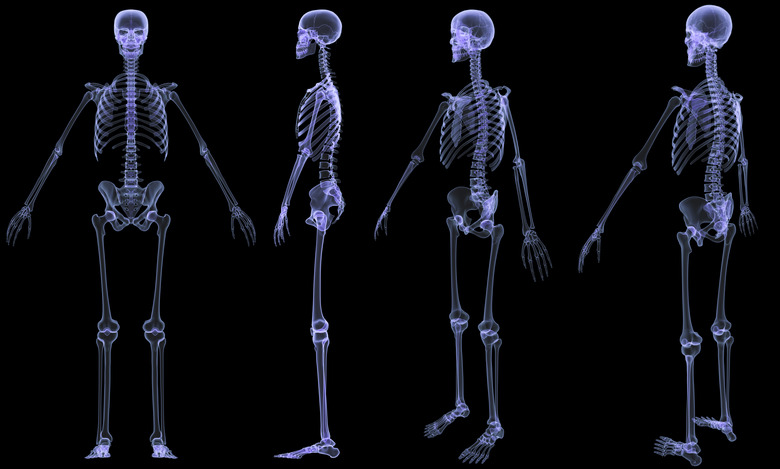How To Determine Height Through The Skeleton
Much of the magic practiced by criminologists and forensic investigators on television shows is only loosely based on real science. Both lawyers and real-life scientists bemoan the depictions of near-instantaneous turnaround of DNA evidence, image enhancement and facial recognition that are staples for script writers. One technique that is, however, solidly grounded in science is estimation of height from skeletal remains. The science of stature estimation is a well-established practice in forensic anthropology, which allows a scientist to infer the height of an individual by measuring certain bones.
General Principles
General Principles
Anthropologists have conducted many statistical studies of human skeletons to develop tools for estimating a person's height from his skeletal remains. The researchers measured certain bones of people of known heights and performed linear regression to arrive at simple formulas. These formulas, when applied to the measurements of bones of an unknown, allow a researcher to estimate the height of the person when alive.
Input Data
Input Data
The formulas for estimating height from skeletal remains differ depending on the individual's race — Caucasoid, Negroid or Mongoloid. The formulas are also different depending on the sex of the individual. You must determine those two factors independently to select the correct regression equation.
Which Bone to Use?
Which Bone to Use?
Researchers have generated statistical relationships using several different bones and combinations of bones. Long bones in the legs and arms are used most often. These include the femur, fibula and tibia in the leg along with the humerus, radius and ulna in the arm. Other studies allow estimation based on the bones of the hand or foot. You can increase the accuracy of height estimation by applying the formulas to two or more bones.
Sample Calculations
Sample Calculations
The regression formulas require input in centimeters. For our example, the femur of a female Caucasoid is 46.8 centimeters long (about 18.5 inches). The formula for this bone from a person of this race and sex is:
Height = 2.47 * femur length + 54.10 plus or minus 3.72 cm.
Plugging the femur length into the formula predicts a standing height of 169.7 centimeters (5 ft, 6.8 inches), within a range from 166 centimeters (5 ft, 5.3 inches) to 173.4 centimeters (5 ft, 8.3 inches).
Cite This Article
MLA
O'Donahue, Kelvin. "How To Determine Height Through The Skeleton" sciencing.com, https://www.sciencing.com/determine-height-through-skeleton-5611616/. 29 April 2018.
APA
O'Donahue, Kelvin. (2018, April 29). How To Determine Height Through The Skeleton. sciencing.com. Retrieved from https://www.sciencing.com/determine-height-through-skeleton-5611616/
Chicago
O'Donahue, Kelvin. How To Determine Height Through The Skeleton last modified March 24, 2022. https://www.sciencing.com/determine-height-through-skeleton-5611616/
